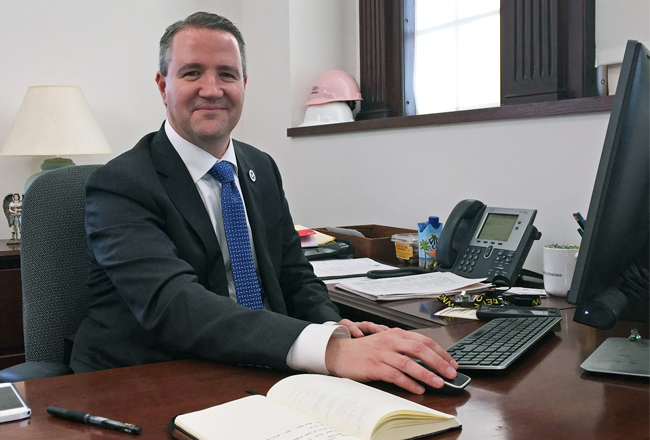Although the numbers are up for Connecticut”™s restaurant industry, they still aren”™t good.
“We”™re still down by around 30,000 jobs since the pandemic,” Scott Dolch, executive director of the Connecticut Restaurant Association, told the Business Journal.
“I keep hearing from different owners that they”™re only 60 to 65 percent staffed. And we all know that food costs are up in general ”” frying oil is three times more expensive than it was pre-pandemic, as are plates and paper.
“The last thing we want to do is increase menu prices,” Dolch said. “But the harsh reality is that it”™s getting harder trying to balance rising costs” with revenue.

According to the latest figures from the Connecticut Department of Labor, as of July 15 the number of employees in the leisure and hospitality sector, which includes food services, stood at 129,900 ”” an increase from January”™s 118,900 but just a 1.2% rise from June.
Staffing has been a problem since restaurant capacity restrictions were lifted in March, not so much due to employees”™ safety concerns as it is to those potential workers”™ relying on unemployment benefits ”” and the fact that so many jobs being available has increased competition among dining establishments.
Dolch noted that the state”™s Pandemic Unemployment Assistance (PUA) program, which delivers up to $300 per week, expires on Sept. 4. Governors in 26 states suspended similar programs earlier than that, something the Connecticut Restaurant Association petitioned Gov. Ned Lamont for in vain.
“You have to give 30 days”™ notice to do that, so we”™re already past it,” Dolch said. “But we”™re hopeful that this will result in jobs coming back at an even higher level.”
As it is, he said, a lot of the food industry workforce ”” high school and college students ”” are making plans to return to school, posing a further threat.
“Some places have already cut hours or are operating five days a week instead of seven,” he said. “Restaurants on the shoreline do 30 to 40% of their overall yearly revenue in a couple months”™ span. There”™s been a lot of talk over the past few weeks about ”˜I don”™t know if I”™m going to make it.”™”
Some 600 restaurants closed as a direct result of the pandemic, while others went into “hibernation” (“I don”™t like that term ”” a bear is full when it hibernates.”). That the industry was never required to operate at less than 50% capacity and the second round of PPP funds, which Dolch called “critical,” helped the sector avoid an apocalypse.
Meanwhile, 1,303 establishments received grants from the $28.6 billion federal Restaurant Revitalization Fund, ranging from $1,151 to $5 million, according to the Connecticut department of the Small Business Administration.
“But there are 2,066 others that applied and got nothing,” Dolch said. “We have to get the RRF replenished.”
Efforts by the National Restaurant Association, among others, to set aside $48 billion to do just that have so far been frustrated. Earlier this month, U.S. Sen. Ben Cardin (D-Maryland) introduced and moved to pass S. 2675 by unanimous consent to add that $48 billion, but its future was cast into some doubt when the attempt at unanimous consent was blocked.
“However,” the National Restaurant Association said, “the effort shows that there is still strong bipartisan support for the industry and efforts to provide the needed funds to SBA to complete the mission of the RRF continues.”
As for the rising costs of food, the U.S. Department of Agriculture has reported that from May to June 2021, beef and veal prices increased 5.3%, pork rose 4% and poultry increased 0.9%. The USDA is predicting respective increases of 3% to 4%, 4% to 5% and 2.5% to 3.5% for the entire year. Fresh fruit prices are predicted to increase between 5% and 6% in 2021.
In case the news isn”™t already bad enough, Dolch noted that the move in some municipalities toward requiring masks to be worn indoors in all public places, including restaurants, is another potential business killer. Bridgeport, Norwalk and Stamford have all instituted that policy.
“Everybody wants employees and customers to be safe,” he said. “But consumer confidence is everything. If Norwalk has a mandate and Westport doesn”™t, does that mean Norwalk”™s not as safe to go to? And when they rescind the order, how well are they going to publicize it? And on top of all that, how are they going to police it? Restaurant owners and their staffs have enough to deal with as it is.”
One silver lining, Dolch said, is that restaurants are better prepared to get through the impending winter months than they were last year.
“A lot of them have already done igloos or greenhouses or otherwise invested in and set up outdoor heaters,” he said. “And we saw that customers came back.
“It”™s just a matter of maximizing our efforts until we get through this.”
















